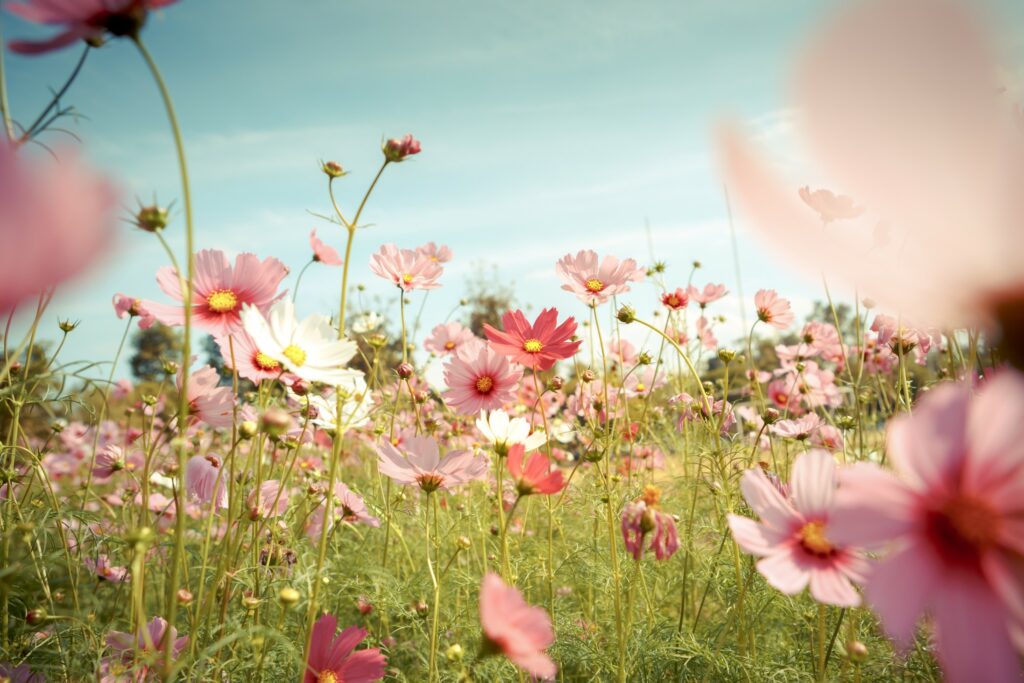From Blossoms to Butterflies: The Fascinating Science of Springtime

The very word “springtime” conjures up images of warm sunshine, fragrant flowers, and fluttering butterflies. For many of us, it’s a season of new beginnings, a time of hope and renewal. The mere thought of spring can evoke feelings of joy, excitement, and wonder. But have you ever stopped to consider the science behind the magic of spring? From the blooming of flowers to the emergence of butterflies, there is a fascinating world of natural wonders that takes place every year during this season. The intricate processes and delicate balance of nature are at play, creating a spectacle that never fails to awe and inspire.
We’re going to take a closer look at the science behind springtime. We’ll explore the factors that trigger blooming, the process of photosynthesis, and the emergence of butterflies. We’ll also delve into the impact of climate change on this season and the natural world as a whole. So buckle up and get ready for a journey into the heart of springtime – a season of wonder, beauty, and hope.
The Season of Spring
Read More »In different parts of the world, the arrival of spring is celebrated in a variety of ways. In Japan, for example, the cherry blossom season is a time of great beauty and cultural significance. In India, the Holi festival is a celebration of color and renewal, while in many Western countries, Easter is a religious holiday that is often associated with the arrival of spring.
One of the most significant changes that occur during spring is the increase in temperature. As the sun’s rays become more direct, the earth begins to warm up, leading to melting snow, blooming flowers, and the emergence of new plant growth. The lengthening of daylight hours also plays a role in springtime, as it allows for more photosynthesis to occur in plants, leading to increased growth and vitality. The equinox is an astronomical event that marks the beginning of spring and occurs twice a year, usually on March 20th or 21st and September 22nd or 23rd
During the equinox, the earth’s axis is tilted neither towards nor away from the sun, resulting in equal amounts of daylight and darkness. This phenomenon signals the arrival of spring on the north side of the globe and autumn on the south side. Another notable event that occurs during spring is Daylight Saving Time, which involves setting clocks forward by one hour in order to extend daylight hours during the evening. This practice is observed in many countries around the world, and while it is a subject of debate among some, proponents argue that it promotes energy conservation and provides more time for outdoor activities.
Springtime is a delightful season of change, growth, and new beginnings. Whether it’s the arrival of warmer temperatures, longer daylight hours, or the emergence of new plant and animal life, there is no denying the beauty and wonder of this magical season.
Why Do Flowers Bloom?

As the long, cold winter finally begins to fade away, a wondrous transformation begins to take place all around us. Trees, shrubs, and flowers that once lay dormant now burst forth with a riot of color, filling the air with their heady fragrances. This remarkable spectacle is known as blooming, and it is one of the most awe-inspiring and emotionally-charged events of the spring season.
But what exactly is blooming, and how does it happen? At its heart, blooming is the process by which plants produce and release their flowers. This process is triggered by a complex set of environmental factors, including temperature, moisture, and light. As the days grow warmer and the sun shines more intensely, these factors combine to awaken the sleeping buds and coax them into producing vibrant, colorful blossoms.
One of the key mechanisms behind blooming is photosynthesis, the process by which plants use sunlight to convert carbon dioxide and water into glucose and oxygen. This process is vital to the growth and development of plants, and it plays a critical role in the blooming process. As the days grow longer and the sun’s rays become more intense, plants are able to carry out more photosynthesis, leading to increased growth and the production of new buds.
But photosynthesis is not the only factor at play in the blooming process. Other factors, such as soil quality, air quality, and the presence of pollinators, can also have a significant impact on when and how plants produce their flowers. In some cases, environmental factors such as pollution or climate change can disrupt the delicate balance of nature, leading to a decline in the number and quality of blooms. Despite these challenges, however, the beauty and wonder of blooming remain an enduring symbol of springtime.
From the first delicate crocuses to the riotous blooms of cherry blossoms, magnolias, and daffodils, there is no denying the emotional impact that these natural wonders have on us. So the next time you see a colorful flower blooming in the sunlight, take a moment to appreciate the science and beauty of this miraculous process.
The Emergence of Insects
When the sun begins to thaw the frozen ground and the trees start to bud with new life, there’s another transformation taking place all around us: the emergence of insects. Perhaps no insect better captures the magic and wonder of spring than the butterfly, whose colorful wings and graceful flight have captured the hearts and imaginations of people for generations.
But how exactly does spring trigger the emergence of these delicate creatures? The answer lies in the complex interplay of biological factors and environmental conditions that influence the timing and intensity of butterfly emergence. As the days grow warmer and the sun shines more brightly, butterflies emerge from their cocoons and begin their short but dazzling lives.
At the heart of this transformation lies the process of metamorphosis, in which a caterpillar transforms itself into a fully-formed butterfly. This process is marked by dramatic physical changes, including the development of wings, legs, and a proboscis that allows the butterfly to drink nectar from flowers. It is this remarkable process that allows butterflies to emerge from their cocoons and take flight, ready to seek out food, mates, and new habitats.
But metamorphosis is not the only factor that contributes to the emergence of butterflies. Environmental conditions, such as temperature, humidity, and the availability of food and water, also play a critical role in determining when and how butterflies emerge. In some cases, the timing and intensity of butterfly emergence can be disrupted by changes in these conditions, such as droughts or heat waves. Despite these challenges, however, the emergence of butterflies remains one of the most emotional and inspiring events of the spring season. Whether flitting among the flowers in a garden, or making their way across vast distances as part of a migratory flock, butterflies remind us of the power and beauty of nature, and of the miraculous transformations that can take place all around us.
The Impact of Climate Change on Springtime
It is increasingly clear that the impacts of climate change are having a profound effect on springtime and the natural world. Rising temperatures, shifting weather patterns, and other environmental changes are causing a cascade of effects that are disrupting the delicate balance of nature and threatening the beauty and wonder of spring. One of the most visible impacts of climate change on spring is the way in which it is altering the timing and intensity of natural events such as blooming, migration, and emergence. Plants and animals that once relied on the predictable rhythms of the seasons are now being thrown out of sync by a changing climate, leading to mismatches between food sources, pollinators, and other critical factors.
In addition to these ecological impacts, climate change is also having a profound effect on the human experience of springtime. Rising temperatures, increased air pollution, and other factors are contributing to more frequent and severe allergy outbreaks, making it difficult for people to fully enjoy the beauty and wonder of the season. Meanwhile, extreme weather events such as floods, droughts, and heat waves are also disrupting communities and causing widespread damage to homes, businesses, and other infrastructure.
But despite these great challenges, there is still hope that we can take action to protect the beauty and wonder of springtime for generations to come. By reducing our carbon footprint, conserving natural resources, and taking other steps to protect the environment, we can help to mitigate the impacts of climate change and preserve the delicate balance of nature. So the next time you feel the warm sun on your face or marvel at the vibrant colors of a spring flower, remember the importance of taking care of our planet, and the role that each of us can play in preserving the beauty and wonder of springtime for future generations.

Explore Nature’s Wonders Through the Science of Spring
The science of spring is an exciting field of study that explores the wonders of nature during this season. Scientists study everything from the emergence and migration patterns of butterflies to the growth and flowering cycles of plants, in order to better understand the complex ecosystem at work in our environment. By examining these phenomena, scientists are able to gain insights into how climate change is impacting our planet, and how we can protect it from further damage.
So take some time this spring to explore the science of spring and uncover the hidden wonders of nature around you. Whether it’s observing the emergence of butterflies or studying the cycles of plants, there is something truly special about the season that we can all appreciate and enjoy!





